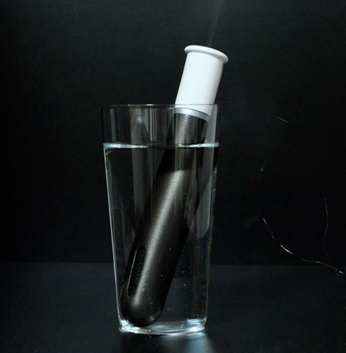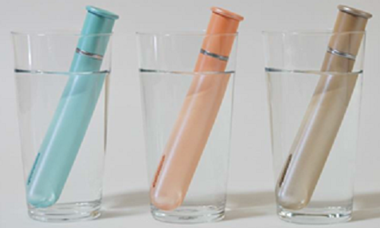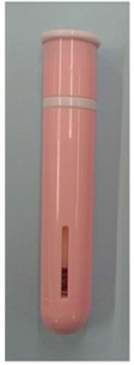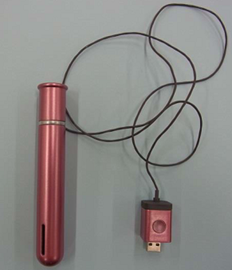May 13, 2017
Unfair Competition News
IP High Court finds that a product displayed at a trade show is protected against imitation under Article 2(1)(iii) of the UCPA, but also that the three-year period of such protection commences at the time of the display
In a case in which plaintiffs sought injunction and damages against a defendant under Article 2(1)(iii) of the Unfair Competition Prevention Act (the "UCPA"), which protects a product shape against unauthorized imitation for three years from the first sale of the product, the IP High Court held that the plaintiffs' products displayed at a trade show became protectable before the plaintiffs actually started selling the product, but also that the three-year period commenced from the date of the display (IP High Court No. 2016 (ne) 10018, judgment issued on November 30, 2016).
Background
The Plaintiffs (individuals) are product designers at a manufacturer of household electronics and also freelance designers forming a unit.
The Plaintiffs developed humidifiers that are shaped like test tubes. The Plaintiffs initially developed a first version of the humidifiers (the "Plaintiff Product(s) 1") and displayed them at a trade show held in November 2011.

Plaintiff Product 1
All photographs copied from http://www.courts.go.jp/app/files/hanrei_jp/320/086320_hanrei.pdf
The Plaintiffs also developed a second version of the humidifiers (the "Plaintiff Product(s) 2") and displayed them at a trade show held in June 2012.

Plaintiff Product 2
However, the Plaintiffs never actually sold the Plaintiff Products 1 or 2.
In 2013, the Defendant (C'est La Vie Co., Ltd.) imported from China humidifiers (the "Defendant Products") and started selling them in Japan.

Defendant Product
In 2015, the Plaintiffs developed a third version of their humidifiers (the "Plaintiff Product(s) 3") and started selling them in Japan.

Plaintiff Product 3
The Plaintiffs filed a lawsuit against the Defendant, asserting unfair competition under Article 2(1)(iii) of the UCPA. Article 2(1)(iii) of the UCPA provides that an act of imitating a shape of "another person's goods" is unfair competition. Such an act of unfair competition is subject to injunction and damages. However, such an act is considered as unfair competition, only if it is committed within three years from the date on which the other person's product was first sold in Japan. The Plaintiffs asserted that the Defendant Products imitated the shape of the Plaintiff Products 1 and 2, and sought injunction against the Defendant.
In the first instance, the Tokyo District Court denied the Plaintiff's injunction and damages claim. The Tokyo District Court held that, in order to be protected as "another person's goods" under Article 2(1)(iii) of the UCPA, the product must be distributed, or at least be ready for distribution, in the Japanese market. The Tokyo District Court found that the Plaintiff Products 1 and 2 were merely prototype samples and were never ready for distribution, and thus that the Plaintiff Products 1 and 2 were not protected as "another person's goods."
The Plaintiffs appealed the Tokyo District Court judgment to the IP High Court.
IP High Court Judgment
The IP High Court found that the Plaintiff Products 1 and 2 fell under "another person's goods" under Article 2(1)(iii) of the UCPA.
The IP High Court held that in order to be protected as "another person's goods," the product does not necessary have to be actually sold. Rather, the IP High Court held that a product can be considered as "another person's goods" as long as the product has been commercialized, namely, has become ready for trading. Further, the IP High Court held that a product is commercialized when the product is ready to serve its function as a product and is ready for sale.
Based on the above, the IP High Court found that the Plaintiff Products 1 and 2 were commercialized when they were displayed in the trade shows.
However, the IP High Court also held that the three-year period for protection commenced from when the Plaintiff Products 1 were displayed in the trade show. The Plaintiffs argued that the commencement date was the date on which the Plaintiffs actually started selling the Plaintiff Products 3. However, the IP High Court rejected the Plaintiff's argument, stating that it would be unfair to allow a protection that lasts for more than three years.
As a conclusion, the IP High Court partially reversed the Tokyo District Court judgment and partially awarded damages to the Plaintiff (since a part of sales of the Defendant Product occurred within the three-year period). However, the IP High Court denied injunction, since the three-year period expired prior to the final oral hearing at the appellate stage.
Comments
The text of the UCPA does not state whether products which are not yet on sale still can nevertheless be protected as "another person's goods." It is notable that the IP High Court clarified this point by holding that such products can fall under "another person's goods" and be protectable against unauthorized imitation under Article 2(1)(iii) of the UCPA.
In the meantime, the IP High Court also held that a plaintiff may not enjoy a protection for more than three years even if the products are not actually sold once it is commercialized. Considering the purpose of Article 2(1)(iii) of the UCPA (namely, to grant protection to an unregistered design of a product for a limited time that is sufficient to obtain a design registration), it seems reasonable to align the timing when a product is protected as "another person's goods" and the timing when the three-year period starts running.
Written by: Ms. Tomoko Honami (Attorney at Law)